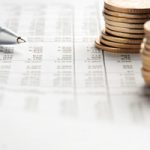Clean fuels 2: South Africa’s problem child

A newer, cleaner standard of fuel was to have been introduced to South African motorists in July, but experts say it may only see the light of day in 2022. ANLERIE DE WET seeks an update on developments for the long-awaited Clean Fuels 2 (CF2) programme
In 2012, the South African government published specifications for the CF2 programme to produce an international quality of petrol and diesel to better accommodate the environment and Euro-5 vehicle standards. The new fuels made in accordance with these standards will replace the very outdated and not so environmentally friendly Clean Fuels 1 (CF1) programme of 2006, which is still being used today.
The programme is the second phase of CF1 – which is the jump from Euro-2 to Euro-5 vehicle standards. It was first scheduled for 2010, but was then moved to 2017. After years of delay, a new launch date for the programme has still not been confirmed.
The programme seeks to cut out the high levels of sulphur found in South African-produced fuels from 50 parts per million (ppm) to 10 ppm. This reduction will produce the cleaner standard of fuels required for fuel-efficient vehicles, and will benefit the environment with less emissions.
Since the announcement to accommodate Euro-5 vehicles, Euro-6 vehicles have been introduced. This makes South Africa’s current cleaner fuels plan outdated. Nonetheless, although vehicle manufacturers and the liquid fuels industry agree with government that CF2 is necessary, they just can’t seem to see eye-to-eye on the matter of how to finance the upgrades.
More specifically, the arguments have been, between the liquid-fuels industry and government’s Department of Energy (DoE) and the National Treasury. The South African Petroleum Industry Association’s (Sapia) refining members want a cost-recovery mechanism from government to facilitate payment for the upgrade of their refineries to produce the new fuels.
“The programme will require significant investment at refinery level in order to configure these plants to make clean fuels,” says Kevin Baart, head of projects at Sapia.
The Treasury proposed an accelerated-depreciation model to support the upgrades, but Sapia refused the proposal saying the incentive was too low to enable its members to earn acceptable returns. Although the total cost of the refinery upgrades can only be determined after a cost-recovery model has been chosen, experts estimate it may amount to R40 billion.
The two parties came to a stalemate in 2015, but decided to establish a joint task team to give the matter some attention. The task team was supposed to release a final report at the end of 2016, but this has now also been delayed. “The task team has to all intents and purposes completed its work, but there are differences of opinion on key aspects that are delaying the release of this report,” says Baart.
He says: “Government has made changes to the proposed CF2 regulations since 2012, which undermine the South African Bureau of Standards’ (SABS) process in finding common ground among interested parties.”
According to the 2012 regulations, the olefin specification was 21 percent for petrol, which the DoE changed to 18 percent in the draft regulations. “If this new olefin specification is mandated by the DoE, it will set back the CF2 process significantly, since redesign of the refineries will be required to accommodate this,” says Baart.
Stuart Rayner, chairman of the fuels and emissions committee at National Association of Automobile Manufacturers of South Africa (Naamsa), says that government has also indicated that it will reverse its previous decision to separate metal-containing and metal-free petrol by July 2017 – specifically to allow the use of manganese additives in unleaded petrol.
“Such additives are not approved by any vehicle manufacturer, and will further compound issues raised by the delay in the CF2 programme,” says Rayner.
“Our members are concerned about the threat of metal additives and the product restrictions it will bring, plus issues in the field, noting that such fuel-related failures are typically not covered by manufacturer’s warranties. This will cause conflicts with customers at dealer level.”
A new draft for the CF2 regulations was released for comment in June 2016, but hasn’t yet been gazetted as final. Baart says he expects this to happen in the first quarter of this year.
In the meantime, some refineries are making plans to produce cleaner fuels without the regulations from government. Since 2013, BP has announced that it and Shell had sanctioned a Clean Fuels 2 upgrade of the South African Petroleum Refineries (Sapref) joint-venture refinery in KwaZulu-Natal, while Sasol and Total are pursuing their own multibillion-rand project at their National Petroleam Refiners of South Africa (Natref) refinery in the Free State.
Baart says: “Sapia’s members have accepted the rescinding of the implementation date, since this will allow further time for the industry and government to come to a mutually acceptable solution with respect to the necessary refinery upgrades required.”
Alex Hime, MD at the industrial and automotive lubricant specialist, Viscol, is not happy with the situation and says the delay in the programme is causing many companies in the industry to shut their doors.
“We have ten plants on hold in South Africa, which can’t open until government makes a decision. We are talking about thousands of jobs, which will help the economy, that are just not happening,” says Hime.
He says the company is only keeping its head above water because of one motoring company in the country that requires the diesel emission fluid, AdBlue, which Viscol produces. Other than that, the company is having to export its products.
Hime explains: “Cleaner fuels bring a whole new industry to create jobs and consequently strengthen the economy – but government is just not utilising this opportunity.”
He adds: “It has been shown that fuels can be efficient, environmentally friendly and cheaper − all at the same time. It’s a win-win situation.”
Nonetheless, Sapia and the DoE are continuing their discussions and negotiations in order to come to an agreement that is acceptable to all parties – including Naamsa.
At this stage the question still remains – will CF2 ever see the light of day? And if it does, will it be too late?
Published by
Focus on Transport
focusmagsa




